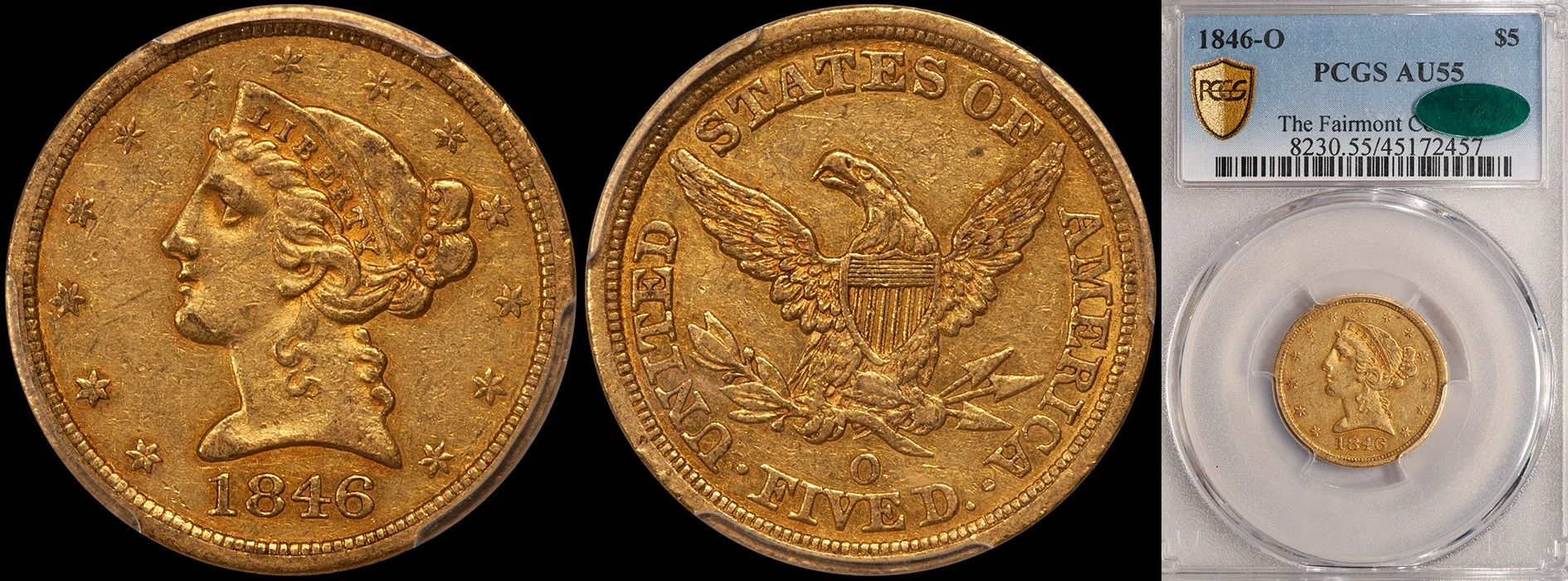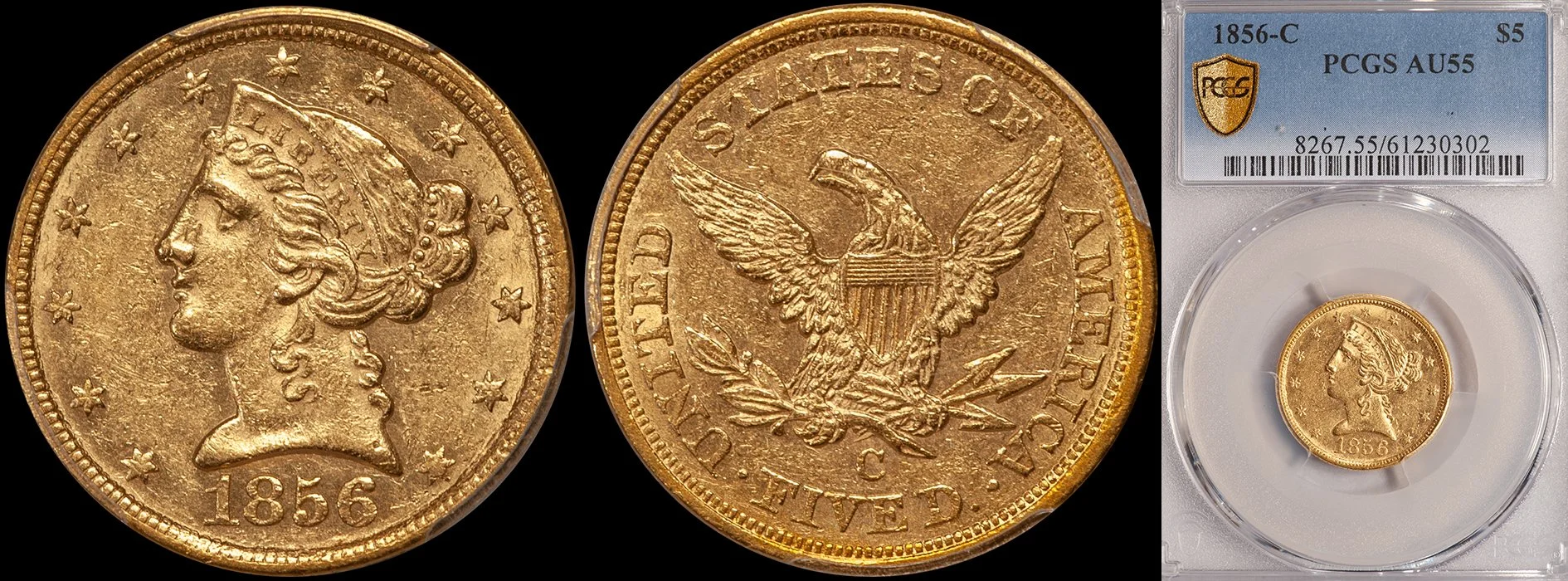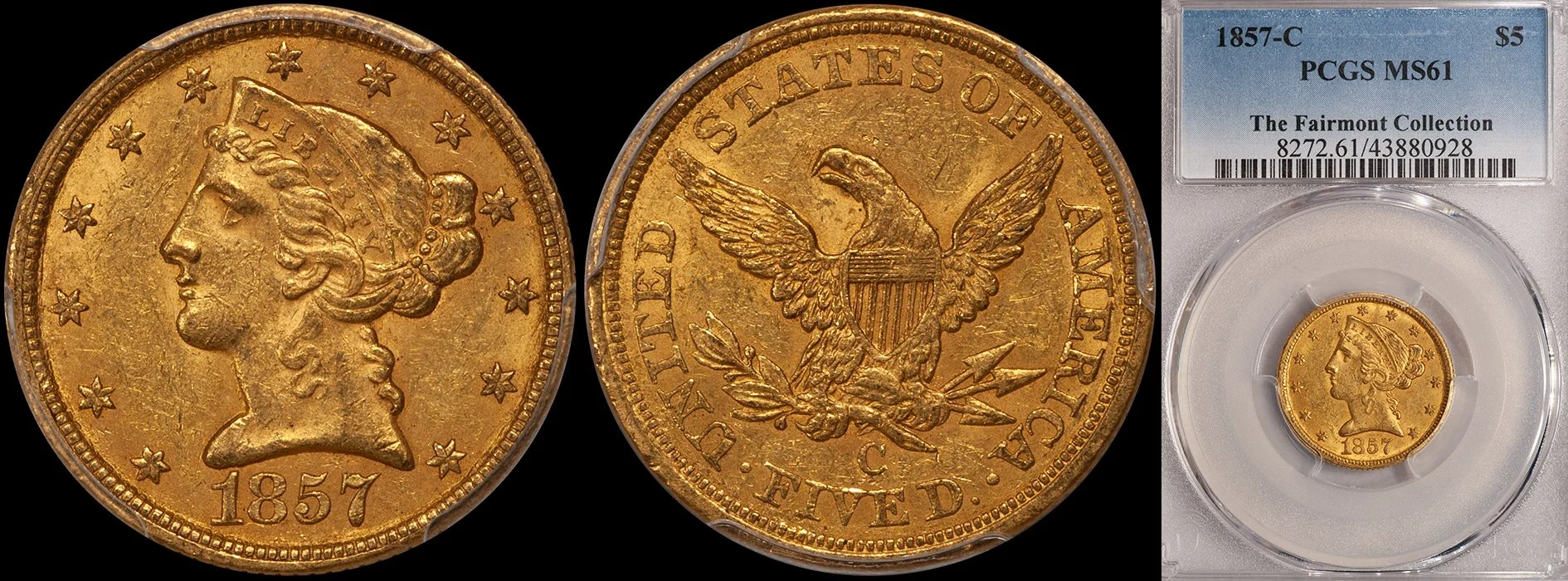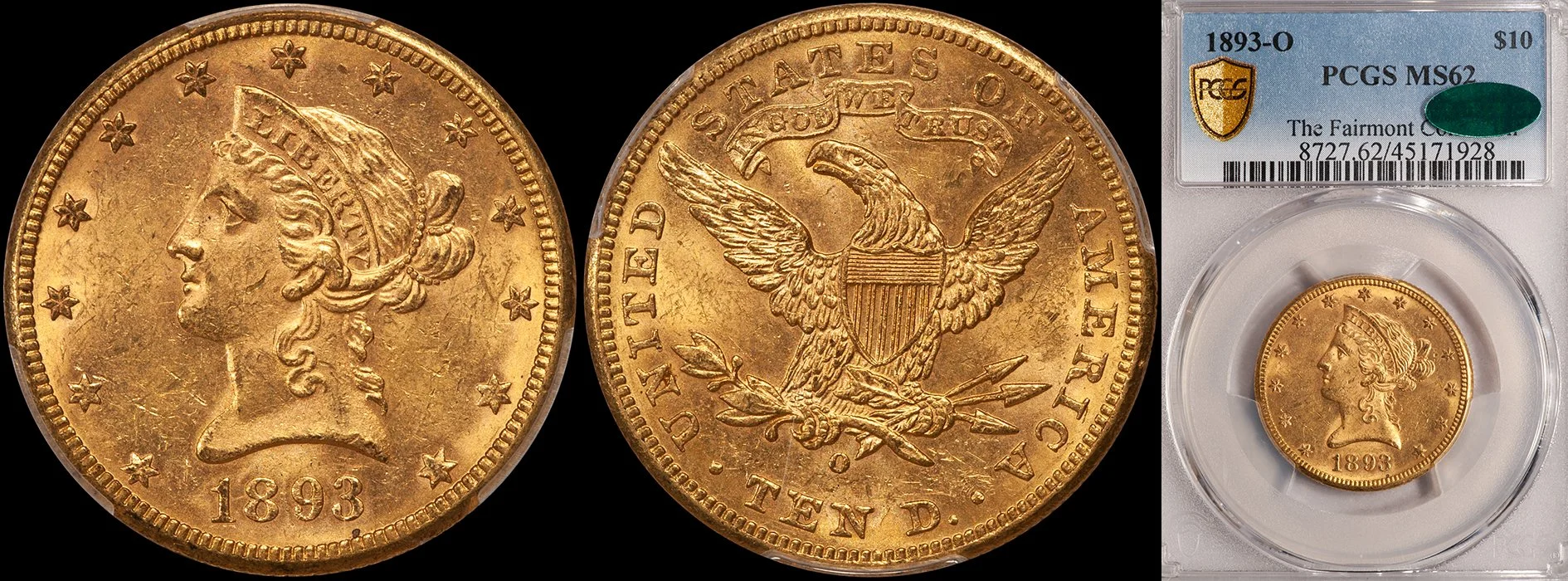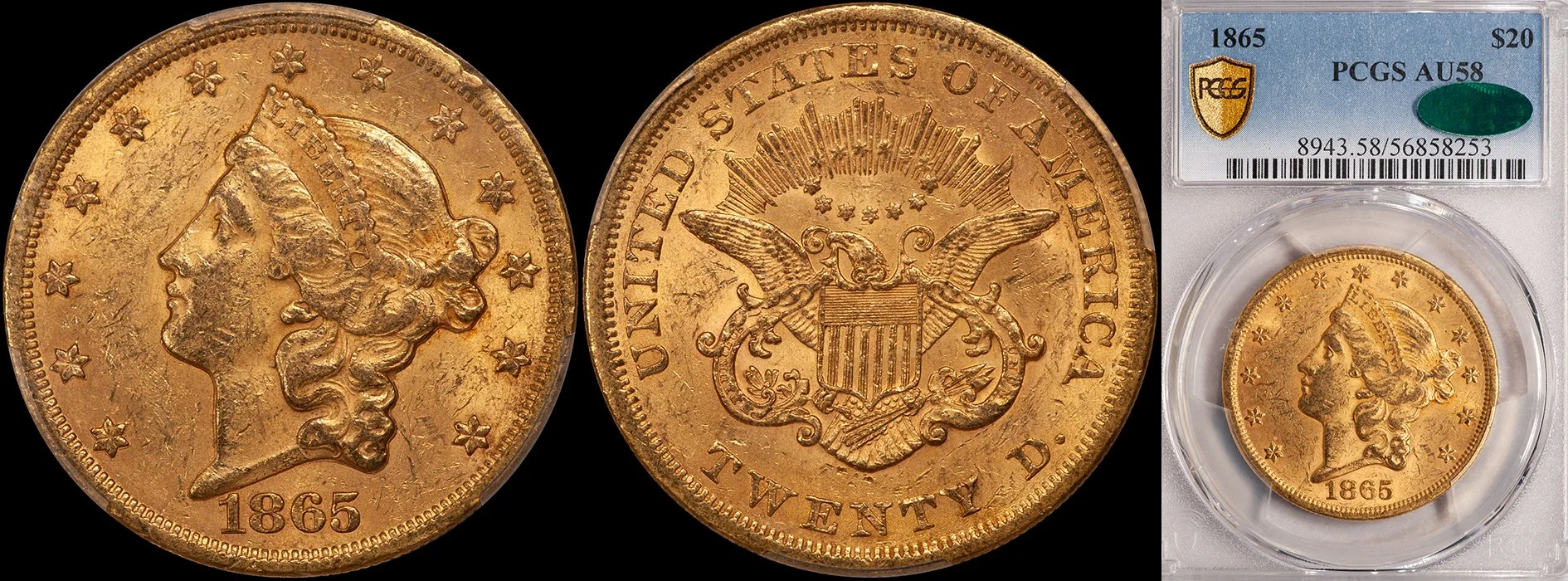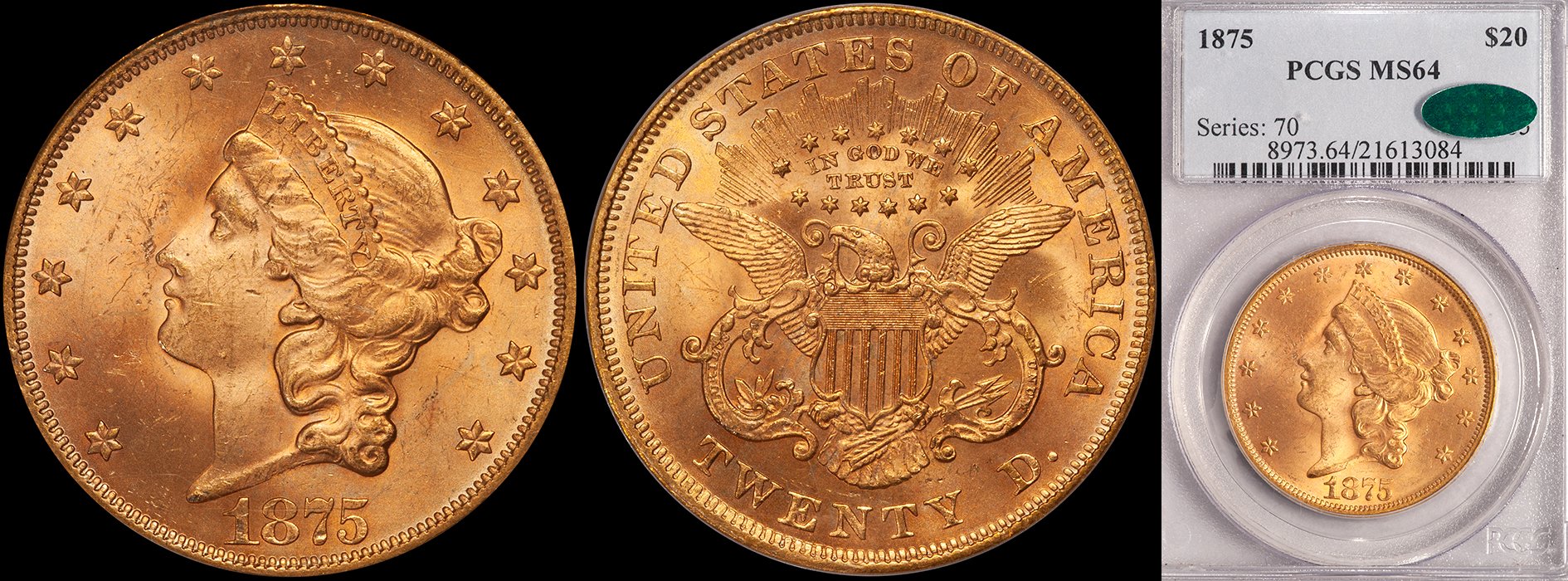Ten Coins/Coin Types Which Still Excite Me Each Time I Handle Them
/I’ve been at the coin game for longer than I choose to admit and at this point in my career, I’m pretty jaded. I have the good fortune to handle finest knowns and really rare issues on a regular basis, and I’m often nonplussed by coins which would make most dealers quiver with excitement (at least those dealers who actually love coins as much as I do). I thought it would be interesting to discuss coins or coin types which still give me the same degree of excitement as I used to feel back when I was a younger and more easily impressionable dealer.
1. A Truly Fresh Coin
Every now and then, I get to handle a single coin or a collection which has literally never been on the market before. In these increasingly-rare situations, I tend to get excited, even when the coins are not especially rare or high value.
Let me give you an example. A few years ago, I got an email from someone who stated they had inherited coins from their grandfather. I get emails of this sort all the time and usually the coins turn out to be low grade dimes, quarters, and halves pulled from circulation in the 1950’s and early 1960’s.
This time was different as I quickly learned from this individual that he owned hundreds of gold coins that his grandfather (a banker) had pulled from deposits made in the 1920’s and 1930’s. I requested an inventory and some images and while there were no great rarities, the photos showed wonderfully original pieces which had lain dormant inside of coin envelopes for decades and decades.
I was able to acquire most of this collection after sending it in for grading, and while the coins weren’t from a famous collection, I had the satisfaction in knowing that I had introduced some lovely coins to the collecting community, specifically to people such as myself who appreciate conspicuous originality.
2. A Coin With a Great Pedigree
I’ve always been a keen student of numismatic history and I remain fascinated by collectors and their collections.
In the field of rare gold collecting, the Eliasberg pedigree tends to stand out over all others and I have had the good fortune of handling dozens of important US gold coins which trace their origin to the October 1982 sale.
There are standard Eliasberg coins, and then there are there are the uber-pedigreed coins from the Clapp/Eliasberg collections. These tend to be the best coins in the collections and they often trace their origin back to the 1890’s/early 1900’s when John Clapp Sr. was active. Clapp was the most sophisticated numismatist of his era, making amazing purchases which wouldn’t be fully appreciated for generations. I have a special fondness for these coins, especially when Clapp Sr. bought them from famous Chapman sales or—better yet—directly from the Mint.
1899 $20.00 PCGS PR63+ CAM, CAC
old sales flip from the proof double eagle above
While a famous pedigree is always of interest to me, a less famous pedigree can be interesting as well. I recently purchased a pair of PR63+ Liberty Head double eagles from a group of coins which had been off the market since the 1940’s. While the owner wasn’t famous, his old coin envelopes (which accompanied the coins) with their handwritten notes from the era were charming and excited me when I bought—and sold—them.
3. A “Perfect” Circulated Coin
Circulated gold coins invariably come with issues. Gold is a soft metal and it is easily impaired if mishandled; whether through commercial or numismatic channels. This is especially true with large coins such as eagles and double eagles which are often inadvertently abused when shipped loose in bags.
This is why I still get a kick when I see a “perfect” circulated coin; especially one for an issue which invariably comes messed up.
1847-O $5.00 PCGS VF25 CAC
An example: there are issues which are rare from an overall perspective and there are issues which are rare from an appearance perspective. I fancy coins which check both boxes. One of these is the 1847-O half eagle; an issue with fewer than 100 known in total and a date with probably fewer than a dozen which are what I would regard are “nice.” I recently handled a really choice VF25 1847-O; not a coin which you’d think I found to be exciting. But this choice, evenly worn, uncleaned piece was a coin which I found hard to part with as I loved its appearance and quickly realized its appearance rarity.
4. 18th Century Gold Coinage
1795 Small Eagle $5.00 PCGS AU58
If you are a student of US Mint history, you know how rough things were in the first few years of this facility’s operations. A lack of funding led to poor equipment which led to considerable hardships when making coins. Which is why any 18th century gold coin is a miracle of existence, let alone of survival.
There is something truly magical about owning an 18th century US gold coin whether it be a well-circulated 1799 eagle, or a choice first-year-of-issue piece such as a 1795 half eagle.
Collectors have to pay a premium to own a nice 18th century gold coin as these issues have been popular for generations, and thus have a very strong level of demand.
What’s my single favorite 18th century gold issue…great question. It’s probably a nice 1795 eagle closely followed by a 1795 half eagle or a 1796 No Stars quarter eagle.
5. Coins With Multiple Levels of Demand
1838-C $5.00 NGC AU55
I have written about this concept before and I become more and more convinced that coins which check the MLD boxes have become an elite area in the field of rare date gold. I love nothing more than buying a nice, properly priced coin like an 1838-C half eagle or a challenging Civil War issue double eagle because I know they will sell quickly as long as I price them properly.
I’m a coin dealer and the ease of which a specific coin sells is a compelling reason as to why I purchase certain dates with more enthusiasm than others. Put more plainly, it's why I’d rather buy a choice EF 1838-C or 1861-C half eagle (two issues with a strong degree of MLD) than a choice EF 1844-C half eagle (a rare issue but one which appeals primarily to Charlotte half eagle specialists).
6. “Bells and Whistles” Coins
Continuing with the 1838-C half eagle as our Poster Child dated gold issue, I would define the ultimate “bells and whistles” examples as follows:
The coin has lovely original surfaces
It was stored in an old wooden cabinet, leaving it with rich color
It is in an older PCGS holder and is CAC approved
It has an interesting pedigree or back story
Sadly, this exact coin doesn’t (to the best of my knowledge) exist but if it did, it would be something I would gladly pay a goofy price for and something which I can assuredly state would cause my website to explode.
A coin doesn’t have to be rare or expensive to be desirable because it checks so many of my “bells and whistles” boxes. I handle coins like this a few times per year and I can invariably guess which of my savvy clients are going to want it as soon as it is listed on my site.
7. “Unicorns”
In the NBA, there are a few players whose skill set is so unique, they are known amongst the cognoscenti as “unicorns.” An example of an NBA Unicorn is Ben Simmons, a 6’10” point guard who can basically play or defend all five positions on the court.
Every now and then, I get to handle a gold coin which is so head and shoulders better than any other example of this date (or type) that is almost makes me giddy to purchase it.
The last two Unicorn Coins I purchased were both New Orleans eagles, pedigreed to the Admiral Collection sale, held by Heritage in February 2018.
1842-O $10.00 PCGS MS63 CAC, a DWN Unicorn Coin
The first of these is an 1842-O eagle graded MS63 many years ago by PCGS and likely better than this by today’s standards. It is far and away the best 1842-O eagle in existence and it also rates as one of the very finest 1840’s New Orleans eagles of any date.
The second is a spectacular straight-from-the-mint Clapp/Eliasberg 1897-O graded MS67 many years ago by PCGS and likely the second finest known With Motto New Orleans eagle of any date (there is an 1899-O in PCGS MS68+ which also qualifies as a New Orleans Unicorn).
8. Coins Which Ooze History
As a self-proclaimed History Nerd, I can’t help but like coins which offer a tangible link to some historic event.
-A coin struck during the Civil War or the War of 1812? Check.
-A San Francisco double eagle dated 1906…the year of the Great Earthquake? Check.
-A worn Carson City gold coin from the 1870’s? Check.
-A shipwreck coin from the S. S. Central America which belonged to one of the deceased passengers from the ship? Check and double check.
For some people, collecting is about making a return on their investments. For others, it’s about the competition of a Registry Set. As someone who is at heart a collector (and has been since early childhood), coins are about history first and foremost.
9. Some Specific Coins Which Still Excite Me Each Time I Buy One
1861-D $1.00 PCGS AU55 CAC
1861-D gold dollars (struck by the Confederacy)
1796 quarter eagles (LOVE the design!)
1808 quarter eagles (a rare one-year type seldom seen nice)
1854-S quarter eagles (my favorite “sleeper” Classic Rarity)
1854-D three dollars (a personal favorite issue of mine)
1795 half eagles and eagles (not rare but great first-year issues)
Very rare date Fat Head half eagles (love the rarity and the design)
Finest known or high Condition Census Southern branch mint half eagles
Just about any cool Liberty Head eagle (my current favorite series)
Really nice examples of really rare Liberty Head double eagles
Very low-mintage Proof gold (especially issues struck prior to the Civil War)
10. Coins/Coin Types You’d Be Surprised I DON’T Get Excited Buying
Super high-grade Philadelphia gold dollars
Bright, shiny early gold
Overly-conserved shipwreck gold
About 90% of all C+D gold (been there, done that)
Most high-grade CC double eagles (ditto)
Which coins make your heart pitter-patter? Go ahead and leave a comment below. If you want help securing an elusive item for your collection, feel free to reach out via email at dwn@ont.com.










